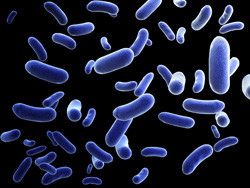High-resolution bacterial imaging
Bacteria are an imminent threat to human health and, therefore, understanding their biology is central to the development of new therapies. The problem is exacerbated by the emergence of antibiotic-resistant bacterial species. With no new classes of antibiotics discovered since 1987, it is vital to identify novel antibiotic targets. However, the small size of bacteria has impeded detailed investigation of the bacterial cell and the identification of proteins that are central to its survival. Targeting such vital proteins constitutes the basis of antibiotic design. To address this issue, the EU-funded CELL CYCLE PALM project employed the recently developed single particle tracking photo activated localisation microscopy (sptPALM) technology that allows the visualisation of abundant proteins. This high-resolution fluorescence microscopy was used to study bacterial cell biology simultaneously on multiple cells over the duration of the cell cycle. The consortium's activities focused on the cell division protein FtsZ, a key next-generation antibiotic target, and on how it is organised during the cell cycle. Results showed that during cell division FtsZ concentrates in the middle of the cell in a band, possibly recruiting other proteins to the division site, and not providing a constrictive force as previously considered. This finding has important consequences for understanding the mechanism of bacterial cell division, and is anticipated to trigger further research studies. CELL CYCLE PALM also developed software for imaging analysis, which is available online(opens in new window). The generated high-throughput modality of the PALM technique was disseminated by blogging, YouTube videos and press releases. Overall, this technique is anticipated to support further investigation and understanding of medically relevant processes in bacterial cell biology.







